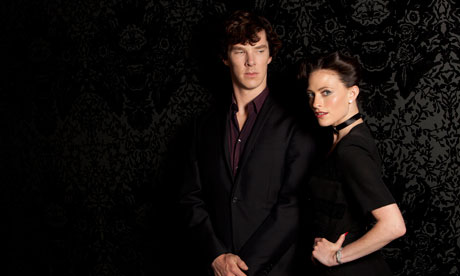I think that one different and interesting revision of Conan Doyle’s story is the one scene in which Irene Adler appears to Sherlock naked. In the original this does not happen, but in the BBC modernized version she first meets with Sherlock not wearing a single article of clothing except heels. Irene’s appearance shocks Sherlock so much that he is thrown off his normal mental balance and cannot get a read on her, much unlike his experiences with mostly everyone else. Her nude appearance to Sherlock is her one “ace in the hole” that she has over him and essentially any other man. Irene bests Sherlock’s genius without some elaborate plan, but by simply exposing herself, naked of any intricate maneuvers, only showing herself. She firmly knows that as an attractive woman she can out do any of his best laid plans simply by playing into his natural and primal desires that all men share. This is what leads me to my claim, Conan Doyle’s original story was about how a woman is Sherlock’s equal, the TV adaptation is a story of how a woman is in control of a man. Just like at the end of “The Rear Window”, Grace Kelly’s character puts down the book that Jame’s Stewart’s character thinks she’s reading, and substitutes it for the one that she actually wants. In general women tend to take the less aggressive approach towards situations and confide in their generally more passive place in relationships; the misunderstood role of women’s gender. This however does not mean that they are less in charge, in fact it means quite the opposite. By sitting back and allowing the more aggressive and more outward going men to run about solving things (Sherlock), women are able to approach with a more laissez-faire angle and view the situations until they can draw rational conclusions about accomplishing their goals. In the case of the “Sherlock” episode, Irene uses her sexuality to shock Sherlock on his heels, play into his less intellectual side and more into his primal one, causing the disruption of his thinking process. Irene accepts her “gender-role” and uses objectification of herself as a distraction for Sherlock, and it works. The BBC version of Sherlock Holmes displays in this episode that women will always be able to manipulate men due to their more passive and thought-before-action approach, and in this case, with their sexual appeal.



















